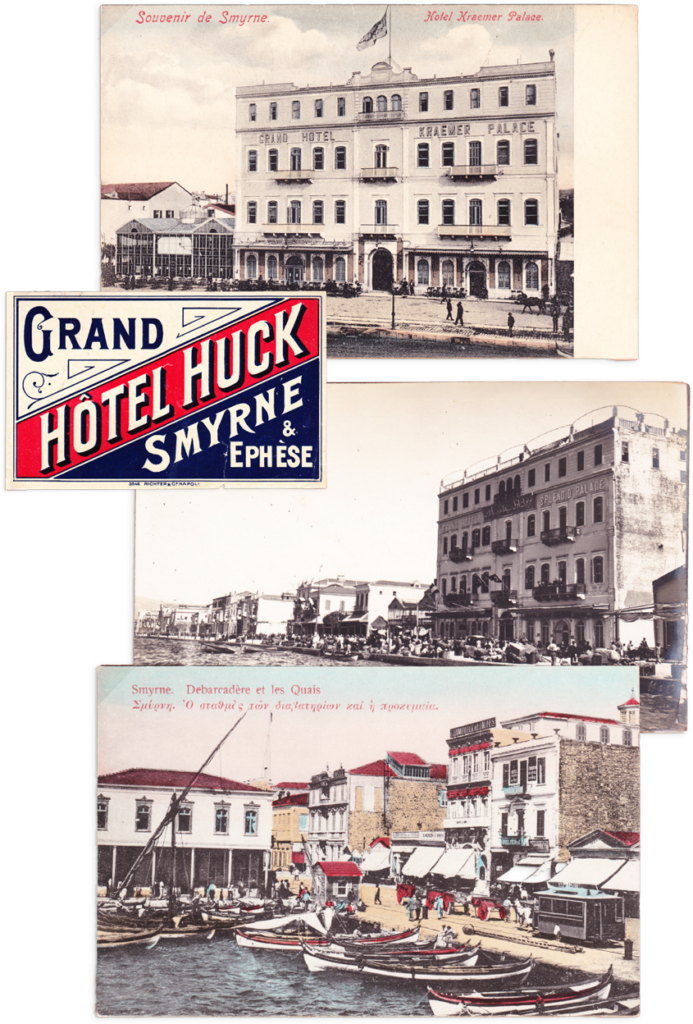With the Industrial Revolution, the raw material demand of newly emerging factories changed the nature of trade, while advancements in transportation technologies—especially railways and steamships—accelerated commerce and facilitated travel between cities and countries. As a reflection of these developments, traditional lodging methods evolved, and hotels replaced hans.
During the period when trade was conducted with caravans, caravanserais located along caravan routes and hans situated at the caravan’s destination met the accommodation needs. Hans, which were mostly built as two-story structures, had their second floors largely consisting of rooms used for lodging.
Starting from the 17th century, when İzmir-centered trade began to develop, the number of hans, which were used not only for trade but also for accommodation, increased steadily. By the 19th century, their number had exceeded 100. As a result of technological advancements, changes affected every aspect of life. As a port city, İzmir was among the leading cities in the Ottoman Empire that both experienced and adapted to these transformations.
Hotels, which began to spread across Europe in the second half of the 18th century, first appeared in the Ottoman territories in İstanbul. Among the cities that followed İstanbul, İzmir was one of the most prominent. Particularly in Kordon Promenade, which was created through land reclamation as part of the quay construction, modern hotels offering accommodation began to open one after another. Among them, Grand Hotel Kraemer and Grand Hotel Huck stand out in period photographs and postcards.
Grand Hotel Kraemer, the tallest building on Kordon, not only served as a hotel but also housed the city’s most famous restaurant. This restaurant was a frequent meeting place for prominent figures of the time, including Şair Eşref* whose name was later given to a boulevard in modern İzmir, and his friends. Additionally, Hotel Kraemer was a witness to several significant historical events.
During the Greek occupation, the ship carrying the Greek King Constantine to İzmir anchored in front of Hotel Kraemer. On the same day, it is known that the king arrived in front of the hotel and that a military unit composed of occupation forces held a march there. Additionally, after the liberation of İzmir, it is known that Mustafa Kemal Atatürk also visited Hotel Kraemer and dined there.
Located diagonally across from the Pasaport building, Grand Hotel Huck had three facades due to its position on a corner plot. On the hotel’s ground floor, facing Ottoman Post Office Street, the Ottoman Post Office was in service. It is a curious twist of history that the building later constructed in this area facing Cumhuriyet Square was used by PTT (Turkish Post Office) for a long period. Even after PTT was privatized and the ownership of the building was transferred to Türk Telekom, the ground floor has continued to serve as a post office. Considering the changes in Kordon Promenade throughout the 20th century, this parcel and its surrounding area shine out in terms of urban history and memory because it had the same function for approximately 150 years.
In addition to Hotel Kraemer and Hotel Huck, many hotels were established in Kordon. Numerous photographs, postcards, and ephemeral materials related to these hotels provide deeper insights into İzmir during that period. Furthermore, Prof. Dr. Emel Kayın’s work titled İzmir Oteller Tarihi (The History of Hotels in İzmir),which is only available in Turkish, contains detailed information about the hotels whose models are presented below.
* Şair Eşref was a Turkish poet and district governor (kaymakam).
